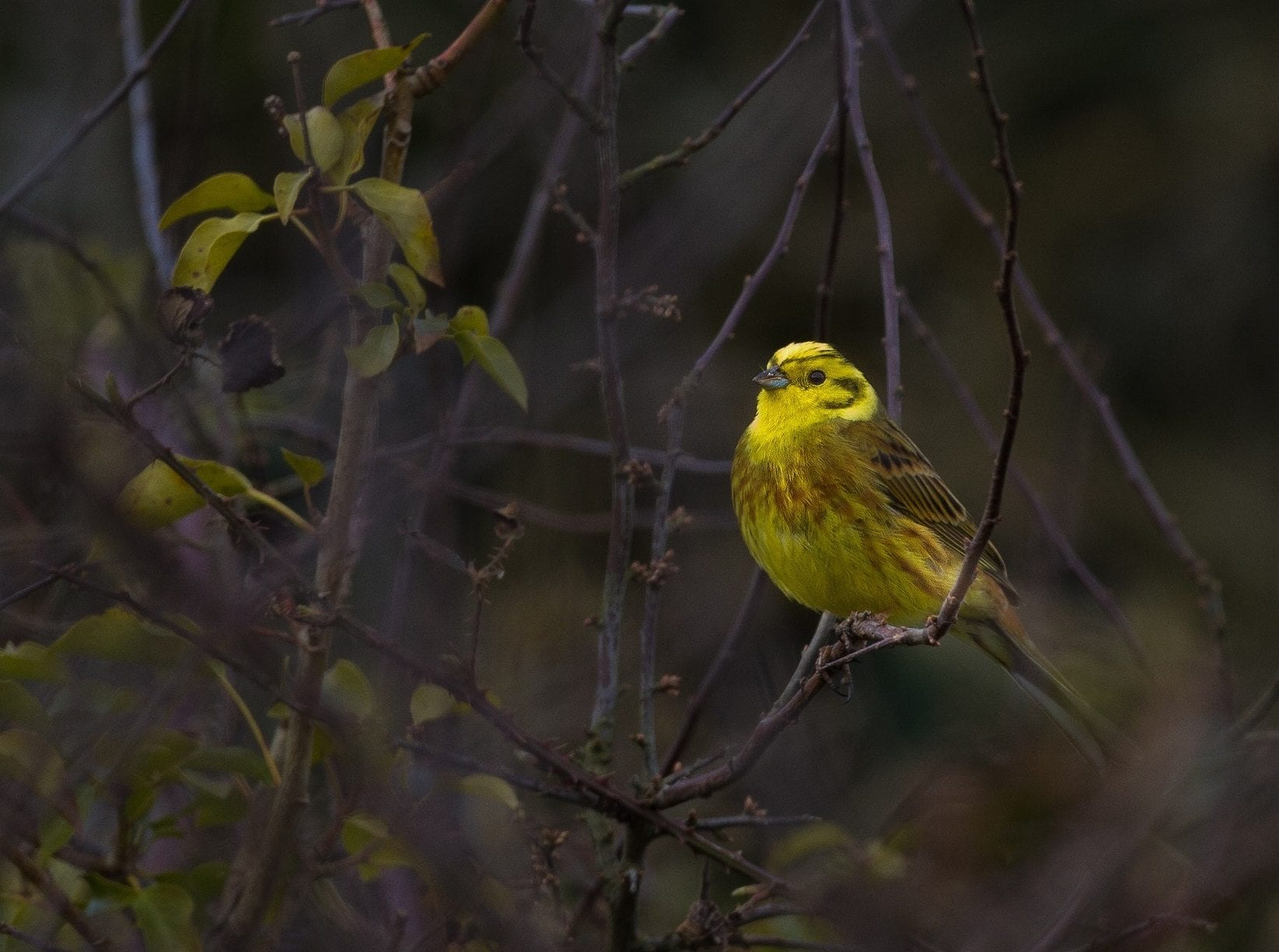By Rosalind Skillen
Living walls of green, hedgerows are part of the fabric of the Irish countryside. They punctuate fields and roadsides, pulsate with life and activity, and sometimes centuries old, remind us of our rural heritage.
The role of hedgerows in biodiversity is sometimes overlooked, but essential. Hedgerows maintain and sustain wildlife diversity. They provide nesting sites, food and shelter for many bird species, including the Yellowhammer, a Red-listed Species of Conservation Concern, and Amber-listed species such as Greenfinch and Linnet.
National Hedgerow Week 2024
This week marks National Hedgerow Week in Ireland. A programme of free events is taking place across the country between Friday 30th August and Friday 6th September 2024. These events are focused on how to plant and manage hedgerows to maximise the benefits for biodiversity, climate and farmers.
Speaking at the launch event for National Hedgerow Week 2024 in Birr Castle, Minister of State for Nature, Heritage and Electoral Reform Malcolm Noonan T.D. highlighted the cultural and historical significance of hedgerows:
“Ireland’s hedgerows are not just a feature of our landscape; they are a living link to our past. These ancient boundaries tell the stories of our ancestors and provide a unique habitat that is central to our biodiversity. Protecting them is not just an environmental imperative but a cultural one.”
Minister Noonan’s comments remind us that hedgerows are more than ecological assets; they mark the passage of generations, with the lives of farmers and wildlife intertwined among their branches.
However, without adequate protection, hedgerows, and the species that they protect, will be nothing more than a memory of the land.
The Wildlife Acts and hedge cutting
We know that hedgerow protection is something BirdWatch Ireland members care about. BirdWatch Ireland provides a public information service via our phone and email lines, and queries around hedge cutting make up the majority of those we receive. In a 2019 survey of BirdWatch Ireland branches, “the deteriorating quality of hedgerows as habitats for birds and other wildlife due to inappropriate management, illegal cutting and removal” was voted the second highest concern for nature.
Cutting back hedges during the nesting season can result in the destruction and/or disturbance of nesting sites of these and many other wild bird species. Disturbance alone may lead an adult bird to abandon a nest, leaving the eggs and chicks within likely to succumb to starvation or predation.
Under the Wildlife Acts, it is against the law to cut, burn or otherwise destroy vegetation including hedges between 1st March and 31st August. The reason for the hedge-cutting ban is to prevent disturbance and destruction of nesting sites of many of our wild bird species.
However, there are several exemptions under this legislation which permit hedge-cutting during the closed period, for example, in the case of road safety concerns. Additionally, if such work is carried out in the “ordinary course of agriculture”, it has blanket exemption. This year, the NPWS clarified that “horticulture” falls under the definition of “agriculture”, which would mean that the cutting of garden hedges is also exempt.
This recent clarification from the NPWS is cause for concern for us as it is now our understanding that hedgerows have no true legal protection whatsoever. As hedgerows do not occur naturally and all originate as deliberate agricultural or horticultural planting, it appears hedgerows have no true legal protection as any possible manner of cutting falls under an exemption.
This is a major shortcoming of the Wildlife Acts and one that is in contradiction of our requirements under the EU Birds Directive. Hedgerows are protected under the EU Habitats Directive if they are breeding sites or resting places for strictly protected species (listed on Annex IV Habitats Directive) or if they are part of protected habitat types (Annex I) or habitats of protected species (Annex II) designated as Natura 2000-sites. There are also EU farm subsidy-linked standards that give hedgerows protection as landscape features that cannot be interfered with or removed. Where removal is necessary, an equivalent length of new hedgerow must be planted in advance.
Support National Hedgerow Week by:
- Raising your concerns about hedgerow cutting with your local councillor or TD
- Attending one of the free events as part of National Hedgerow Week 2024
- Submitting a response to the Government review of Ireland’s wildlife legislation, and its failure to effectively protect Irish hedgerows and wild birds


